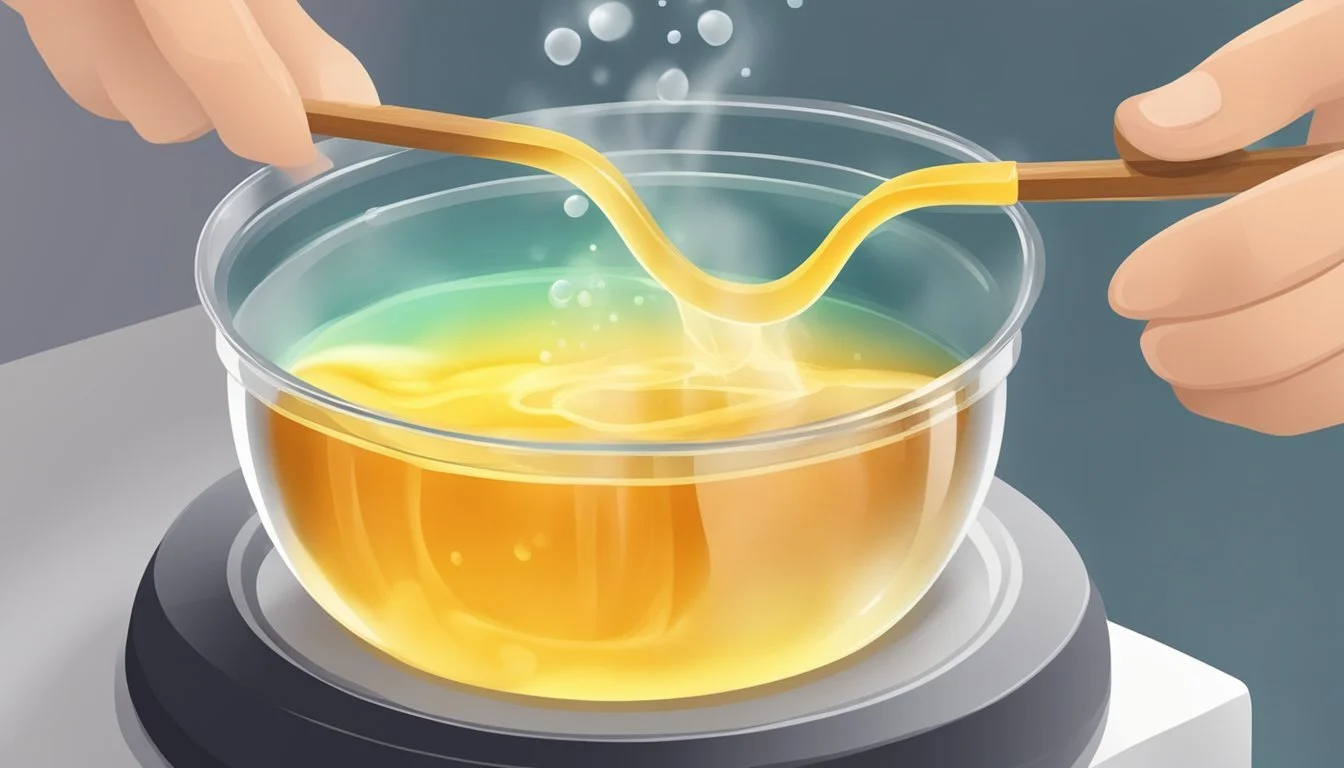Does Agar-Agar Expire?
Shelf Life and Storage Tips
Agar-agar, a popular vegan and vegetarian alternative to gelatin, is a versatile culinary ingredient derived from red algae. It serves as an excellent gelling agent in a wide range of dishes, from soups and sauces to custards and desserts. The storage of agar-agar is essential to maintain its quality and effectiveness.
Agar-agar does indeed expire, similar to other food products. When stored properly in a cool, dry place and in an airtight container, it can retain its gelling properties for several years. However, if exposed to moisture, air, or elevated temperatures, its gelling strength can diminish over time.
Many culinary enthusiasts appreciate agar-agar for its long shelf life and versatility. Ensuring optimal storage conditions not only preserves its gelling capacity but also extends its usability, making it a staple in both vegan and vegetarian kitchens.
Understanding Agar-Agar
Agar-agar, derived from red algae, is a well-known thickening agent with distinctive gelling properties. It plays a crucial role in both culinary and scientific fields, often compared to gelatin but with unique attributes.
Agar-Agar Composition
Agar-agar is primarily made from certain types of red algae species. It consists of a mixture of smaller polysaccharide molecules, mainly agarose and agaropectin, which together form its gelling ability.
The polysaccharides are extracted from seaweed through boiling. The resulting gel is then processed and dried into various forms such as strands, flakes, or powder.
Agar-agar is known for its firm texture and ability to set at room temperature. This makes it a preferred option over gelatin for various applications.
Agar vs Gelatin
Agar-agar and gelatin are both used as gelling agents but differ significantly in origin and properties. Agar-agar is plant-based, sourced from red algae, while gelatin is animal-based, derived from collagen in animal bones and skin.
In terms of texture, agar-agar sets more firmly than gelatin and can remain stable at higher temperatures.
Unlike gelatin, which melts at body temperature, agar-agar requires boiling to dissolve and solidifies quickly, creating a more brittle gel. This makes agar an excellent ingredient for recipes needing a solid, resilient structure, such as certain candies and vegan desserts.
Shelf Life and Expiration
Agar-agar has a notable shelf life when stored correctly, often reaching up to five years. Key factors such as storage conditions and airtight containers play a crucial role in maintaining its quality and effectiveness. Understanding expiration dates is also important to ensure optimal use.
Factors Affecting Agar-Agar's Shelf Life
Storage Conditions: Proper storage is essential for extending the shelf life of agar-agar. It should be kept in a cool, dry place, away from direct sunlight and high temperatures. Humidity, in particular, can compromise the quality and gelling properties of agar-agar.
Airtight Containers: Using airtight containers limits exposure to moisture and air, which can degrade the product. This helps maintain its effectiveness over time.
Temperature Control: Consistent room temperature is ideal. Fluctuations, particularly exposure to high temperatures, can affect the chemical structure, rendering it less effective.
Environmental Factors: A dark place shields agar-agar from light exposure, further protecting its integrity.
Interpreting the Expiration Date
Expiration Date vs. Shelf Life: The expiration date provided by manufacturers typically ensures the best quality. Agar-agar can still be effective past this date if stored properly, but its optimal performance might be compromised.
Best Before Date: This indicates the period within which the product is expected to retain its top quality. Using agar-agar before this date ensures the best results in culinary applications.
Quality Assessment: It's advisable to test agar-agar's gelling ability if it appears old or stored improperly. Mixing a small batch can reveal if it has maintained its quality. Decreased gelling strength often indicates the product has absorbed moisture or has seen temperature variations.
Proper adherence to these guidelines ensures that agar-agar remains a reliable ingredient in various culinary and scientific applications.
Signs of Agar-Agar Spoilage
Odor: One clear sign of agar-agar spoilage is a foul odor. Fresh agar-agar is typically odorless. If it smells musty or sour, it may be spoiled.
Color: Check for any changes in color. Fresh agar-agar should be colorless or have a very light hue. Dark spots or discoloration can indicate spoilage.
Texture: Fresh agar-agar should be firm and smooth. A slimy texture or any signs of moisture can signal bacterial growth or mold contamination.
Contamination: Mold growth is a visible sign of contamination. Look for fuzzy spots, which can be white, green, or black. Bacteria can also be present if the agar-agar appears cloudy.
Bubbles or Fermentation: Any unexpected bubbles or signs of fermentation could indicate microbial activity. This is a clear signal of spoilage.
Storage Conditions: Always store agar-agar in a cool, dry place to avoid moisture and elevated temperatures, which accelerate spoilage. Use air-tight containers to limit exposure to air and contaminants.
Handling: Handle agar-agar with clean, dry hands or utensils to prevent contamination. Even the slightest moisture can introduce bacteria or mold spores.
Spoilage Indicator Signs Odor Musty or sour smell Color Dark spots, discoloration Texture Slimy, moisture presence Contamination Mold growth, fuzzy spots, cloudiness Bubbles Unexpected bubbles or signs of fermentation Storage Exposure to moisture, air, elevated temperatures Handling Contamination from unclean hands or utensils
Being cautious with these indicators can help ensure the quality and safety of agar-agar in culinary or scientific applications.
Proper Storage Practices
Agar-agar has a lengthy shelf life if stored correctly. Proper storage can prevent it from losing its gelling properties and ensure safety during use.
Storing Dry Agar-Agar
Dry agar-agar should be stored in a cool, dry place such as a pantry. Temperatures between 15-20°C (59-68°F) are ideal. Direct sunlight may degrade its quality, so it should be kept away from windows or other sources of light. Air-tight containers are best for storing dry agar-agar to limit exposure to moisture and air. Materials like glass or food-grade plastic work well.
Avoid storing near sources of heat, such as stoves or ovens, as elevated temperatures can reduce its effectiveness. Additionally, keeping it away from humidity sources like sinks will help maintain its gelling properties. Properly stored, dry agar-agar can remain usable for several years.
Storing Prepared Agar-Agar
Prepared agar-agar, such as set gels, should be stored in a refrigerator to maintain its texture and prevent spoilage. Ensure it is also kept in an air-tight container to avoid contamination and drying out. Refrigeration at temperatures below 4°C (39°F) is recommended.
Freezing is not advisable for prepared agar-agar as it may alter the texture and compromise its gelling capability. If storage beyond a few days is necessary, the refrigerator is the most suitable option, and usage should be monitored to ensure quality. Avoid leaving it exposed to air for long durations before or after refrigeration, as this can introduce bacteria or other contaminants.
Using Agar-Agar in Cooking
Agar-Agar serves as a versatile ingredient in various culinary applications. Employing it requires proper preparation and attention to cooking and setting temperatures to achieve the desired texture.
Preparing Agar-Agar
Proper preparation involves dissolving agar-agar in liquid before use.
Measure: Precisely measure the agar-agar powder or flakes according to the recipe. Generally, 1 teaspoon of agar-agar powder can gel 1 cup of liquid.
Mix with Liquid: Combine the agar-agar with a cold liquid (water, fruit juice, or milk). Gradually stir the mixture to ensure the agar-agar disperses evenly.
Boil: Bring the liquid to a rolling boil. Boiling is essential as agar-agar needs to dissolve completely at high temperatures.
Simmer: Allow the mixture to simmer for 1-2 minutes, ensuring the agar-agar is completely dissolved. Undissolved particles can affect the final texture.
Tip: Straining the mixture can help remove any undissolved particles.
Cooking and Setting Temperatures
Temperatures play a crucial role in setting agar-agar.
High Heat: Agar-agar dissolves at around 90-100°C (194-212°F). Ensure the mixture reaches this temperature to activate its gelling properties.
Cooling Down: Once dissolved, the mixture must cool to around 40°C (104°F) to start gelling.
Refrigeration: For best results, refrigerate the mixture until it sets firmly, which usually takes a few hours.
Agar-agar is ideal for making jellies, custards, and other gelatinous desserts like fruit jellies and vegan panna cotta. Unlike gelatin, it can set at room temperature, though refrigeration ensures stability.
Note: Ensure compatibility of agar-agar with acidic ingredients like fruit juices and soy milk, as they might require adjusting the quantities or extending boiling times for proper setting.
Health and Nutrition
Agar-agar offers various dietary benefits, including being a good source of fiber and minerals. It also serves as a useful ingredient in medical and dietary contexts, particularly for vegan and gluten-free diets.
Dietary Benefits of Agar-Agar
Agar-agar is a low-calorie substance that contains minimal carbohydrates and fat. This makes it an optimal choice for those on a calorie-controlled diet.
Another key benefit is its high fiber content. The fiber present in agar-agar aids in digestion by adding bulk to the stool, acting as a natural laxative and supporting regularity in the digestive system.
Additionally, agar-agar is free from common allergens like gluten, soy, and preservatives, making it suitable for various dietary restrictions. Being a vegan substitute for gelatin, it is an excellent option for those who avoid animal products.
Agar-Agar in Medical and Dietary Contexts
In medical contexts, agar-agar is often touted for its digestive health benefits. Its fiber content can help relieve constipation and promote regular bowel movements.
It has also been suggested to aid in detoxifying the body by helping the digestive system process waste more efficiently. For individuals with gluten intolerance or celiac disease, agar-agar is a safe alternative that provides similar gelling properties without the gluten.
Furthermore, the minerals found in agar-agar, such as calcium and iron, contribute to its nutritional value. These minerals help in maintaining various bodily functions, making agar-agar more than just a culinary ingredient but also a healthful addition to one's diet.
Availability and Purchase Tips
Agar-agar is readily accessible at various locations such as supermarkets, health food stores, and online platforms. Understanding the types of agar-agar products and knowing how to choose quality items can significantly enhance your culinary experience.
Types of Agar-Agar Products
Agar-agar is available in different forms, each suited for specific uses. The most common types include agar powder and agar flakes.
Agar powder is fine and dissolves quickly, making it ideal for recipes that require a smooth consistency. It is widely available in supermarkets and health food stores.
Agar flakes are coarser and may take longer to dissolve. They are often favored in recipes from Asian cuisine and are commonly found in Asian markets. Both forms are available through various online retailers.
Choosing Quality Agar-Agar
Selecting high-quality agar-agar involves checking gelling strength and freshness. A high-quality product will have a firm gelling strength, which is key for achieving the desired texture in dishes.
When purchasing, look for products with clear expiration dates to ensure freshness. Packaging should be air-tight to protect from moisture and strong odors, which can degrade quality.
Health food stores and reputable online platforms usually offer agar-agar with robust quality controls. Whether you choose powdered agar or flakes, confirming the product’s quality will enhance its performance in your culinary creations.
Unique Applications of Agar-Agar
Agar-agar serves as a crucial ingredient in both the culinary and scientific worlds. Its unique properties allow for a variety of practical uses.
Agar-Agar in Culinary Innovation
Agar-agar, derived from seaweed, is a popular substitute for gelatin, making it ideal for vegan and vegetarian diets. Its excellent gelling ability forms the basis of numerous dessert recipes, including the well-known raindrop cake. This clear, jelly-like cake showcases agar-agar's capacity to hold shape while providing a smooth, firm texture.
In addition to desserts, agar-agar acts as a reliable thickening agent in soups and sauces. Its ability to gel at room temperature and remain stable even when reheated makes it a versatile culinary ingredient. It's also used in molecular gastronomy to create innovative dishes that surprise with texture and form.
Agar-Agar in Science and Research
Agar-agar is indispensable in biological and scientific research. Its gelling ability is crucial for creating agar plates, which are widely used in microbiology to culture bacteria and fungi. The firm, stable medium provided by agar offers an excellent environment for scientific experiments and microbial growth studies.
In the field of biology, agar-agar serves as a medium for carrying out various tests, including antibiotic resistance testing and genetic engineering experiments. Its clear, colorless nature allows for easy observation and analysis of colony growth and other biological phenomena. This plant-based gelatin’s versatility extends to laboratory environments where precision and consistency are paramount.






